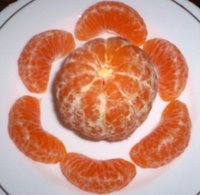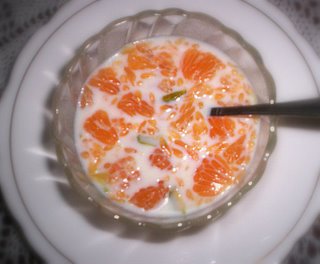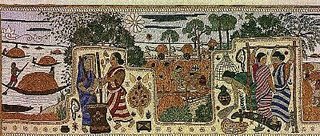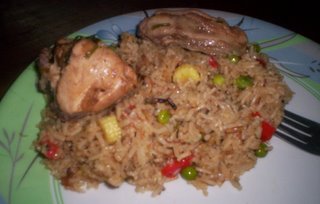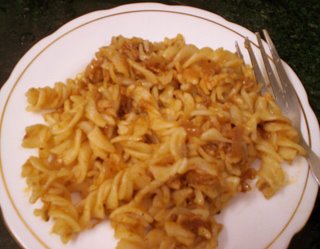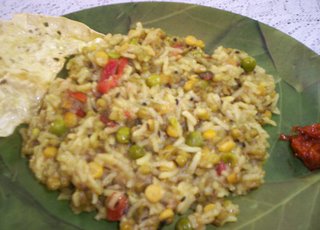Summertime Refreshment
 I am back. To blogging and to Kalyn's Weekend Herb Blogging (WHB) too. And what better way to do that than bring a most delicious summer drink on the table? A drink, that besides being of delectable taste, also packs a punch in terms of nutrition. But first, a little about the fruit that yields this yummy drink.
I am back. To blogging and to Kalyn's Weekend Herb Blogging (WHB) too. And what better way to do that than bring a most delicious summer drink on the table? A drink, that besides being of delectable taste, also packs a punch in terms of nutrition. But first, a little about the fruit that yields this yummy drink.Found all over the sub-Himalayan forests, and indeed across the whole of India, Bilwa or Bel (Aegle marmelos/Bengal quince) is a most sacred tree for Hindus. Its leaves and fruits form an integral part of the worship of Shiva--a part of the all-important Hindu trinity of gods. A symbol of fertility, all parts of the Bilwa tree contain medicinal properties. This article provides a wealth of information on the tree as well as the fruit.
Talking of the fruit, it too boasts of numerous health benefits. In fresh, half-ripe form, Bel is used as an antidote for treating diarrhea, hepatitis, TB, dysentery, and dyspepsia. Learn more about the fruit's healing power here.
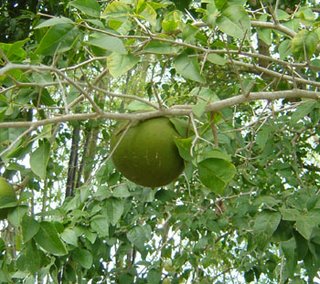
Personally, I am very fond of Bel. It's inexpesive, tasty, and memory-filled. One of my typical summer vacation activities during school years used to be getting a bel broken by someone (the fruit has a hard exterior and needs some mettle for dismantling) and scooping out the soft, sticky pulp with a spoon. I would just have it like that, without any ado. And dare I say, this favourite fruit of Lord Shiva, did indeed taste divine. It has a sweet fragrance and the taste is naturally sweet. The unchweable and bitter seed did pose a bit of hindrance, but I overcame that with my persistent interest in eating the scooped-up pulp.
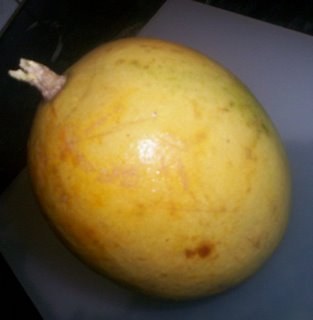
I can't recall exactly when my rustic manner of eating a disintegrated Bel graduated into relishing this amazing drink made from it. However, the graduation has surely been most rewarding. Let me waste no more time then to introduce you to one of my favourite summertime concoctions.
Beler Pana/Bel Lassi (Bel drink with yogurt) [For a single serving]
Ingredients:
Bel pulp: 2 tablespoons (Scoop out the pulp, mash it, remove the seeds, and strain to get a smooth pulp)
Natural Yogurt: 2 tablespoons
Sugar: 1 1/2 tablespoons
Water: 1 cup
Ice cubes
Method:
1. Take Bel pulp and yogurt in a glass. Add sugar and beat the mixture well. Make sure there aren't any lumps.
2. Add water and mix well.
3. Add the ice cubes.
4. Cheers!
If you can get hold of this fruit, do try this aromatic drink. You are likely to fall for the rich, sweet taste and vow to enjoy it all through the hot weather.

Chill!
Sury



